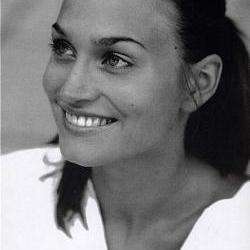On 23rd January 1941, composer Kurt Weill, librettist Ira Gershwin and author Moss Hart’s Lady in the Dark, a musical drama focused on psychoanalysis, opened on Broadway. Saturday it enjoyed its Austrian premiere in Vienna, home of Sigmund Freud, at the Volksoper. Despite bearing significant challenges for a Viennese audience, the effort was a success, thanks to the strength of Weill’s music, strong singing and dancing, and an imaginative directorial concept.
The musical is a departure from conventions – both social and theatrical – and is progressive for its time. It opens with lengthy dialogue instead of music, introducing Liza Elliott (Julia Koci). Elliot, a successful editor of a fashion magazine, is the object of desire for several men, including her long-term lover, Kendall Nesbitt (Axel Herrig), up-and-comer Randy Curtis (Ben Conner) and marketing manager Charley Johnson (Christian Graf). She is also on the verge of a nervous breakdown and seeking psychiatric help. The show therefore focuses nearly completely on the inner workings of a career woman; a woman openly having an affair with a man she is unsure about marrying. In this production, she holds out, though in '41 the denouement was less emancipated.
The musical numbers are concentrated in three extended dream sequences, where Liza explores her trauma. These include a glamorous excursion, a wedding scene turned nightmare and a circus sequence where she is put on trial. Here are the strong points of the evening: the entire ensemble shines, but none more brightly than Koci, a true star and switch hitter in the Volksoper ensemble who has long been underutilized. Equally at home in opera, operetta and musical, Koci was convincing both as the anxious protagonist and her glamorous alter ego. Jakob Semotan, another house favorite, was another standout as Elliott's photographer/circus director, and his patter-song “Tchaikovsky (and Other Russians)” a particular highlight.
The dream sequences were also where inspiration blessed the directorial team. With Matthias Davids at the helm, they designed a highly technical show. There are numerous quick changes in and out of a combination of always catchy – though occasionally questionable – costumes (Susanne Hubrich). Hans Kudlich's innovative stage design includes a massive couch reflected in a mounted mirror, and a towering mannequin whose slouching undergarments doubles as the judge’s perch. Florian Hurler’s choreography is likewise commendable; he sweeps a children’s ensemble, dancers, contortionists and chorus into Weill’s score, creating a flurry of deliciousness. The score itself is fabulous and includes two of Weill’s best known numbers in the English speaking world, the haunting, lyrical “My Ship” which functions as a Leitmotif throughout the piece, and “The Saga of Jenny,” where Eliott points out the dangers of being too decisive. In the excellent hands of conductor James Holmes, it swung and lilted brilliantly.
Despite this, I imagine this show might be a tough sell for both local musical and core Volksoper audiences, which only partially overlap. On the one hand, much musical theatre in Vienna is empty, glitzy fluff. (Remember I am from Austria? Neither do I!). A drama about psychoanalysis might just be too much interiority for some. On the other hand, there is also persistent arrogance concerning Weill’s Broadway compositions vis-à-vis his “true”“(i.e. German) art in Dreigroschenoper. This leads to Weill’s memorable New York numbers being functional unknowns in Vienna, and audiences prefer tunes they recognize. In addition, the German translations often fall flatter than a Palatschinken in comparison with Gershwin’s witty lyrics. The largest hurdle, however, is the length of the spoken scenes in the first act. Outstanding singers are not always world class actors, and this text could have benefited from pruning to play to everyone’s strengths.
That being said, I applaud the Volksoper and the entire team for mounting this innovative, courageous effort so successfully. It was truly a breath of fresh air, particularly in light of the pandemic-related delays plaguing the house this fall. Bravi, tutti!




